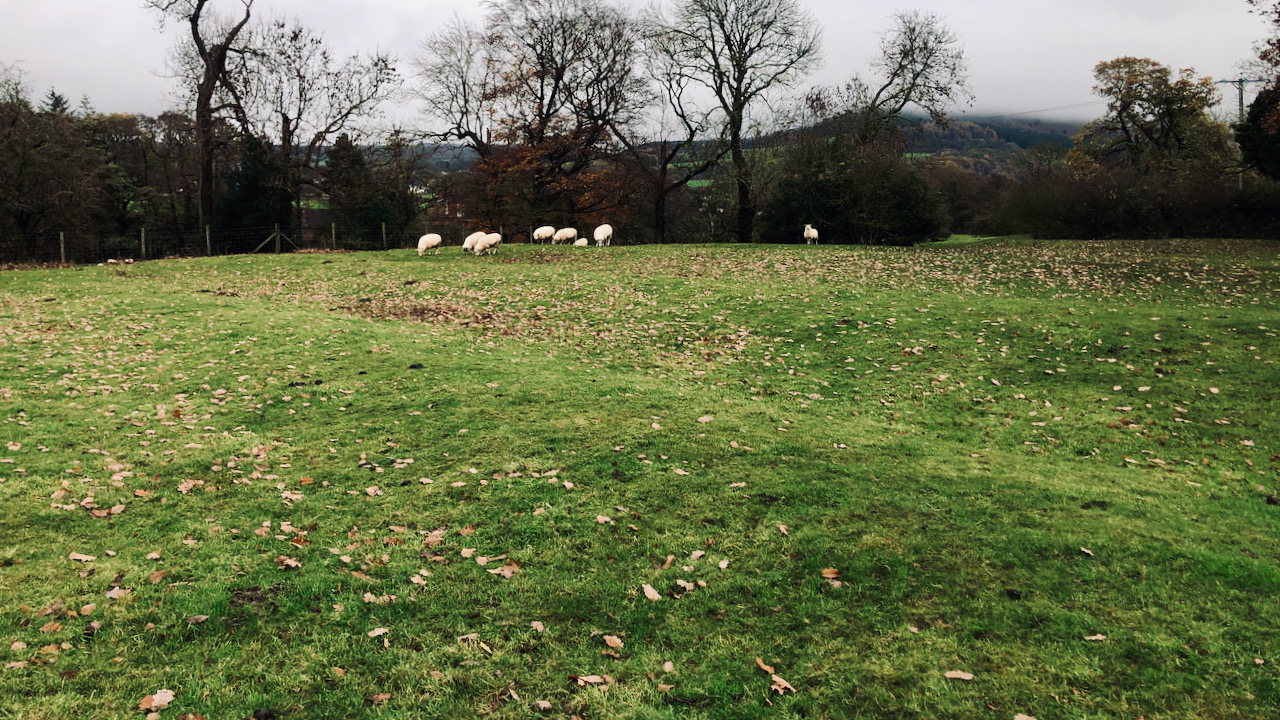Many times, I’ve crossed this grassy field, marching along the even undulations as if it were a colossal green corrugated roof. Rig and furrow, these ancient earthworks, show their best under the slanting rays of the low sun or when the last patches of snow yield to a thaw. Even the fall of autumn leaves can accentuate the furrows.
Rig and furrow likely harken back to medieval times, but could actually be earlier or later, maybe even catching a glimpse of the Napoleonic era, depending on the frequency and size. In the era before enclosures fenced in the land, settlements grew their crops in ‘open fields.’ Everyone pitched in, divvying up the strips by drawing lots. Each strip, or ‘land,’ was about 22 yards wide and roughly 220 yards long, a measure they called a ‘furlong‘ (furrow-long).
With oxen, and later horses, the ploughing began from the left, heaping up the soil to the right, creating a ridge, a mound of earth reaching up to 6 feet high. Oddly enough, this increased your plot’s surface area, letting you sow more crops. They had to be shrewd about what they planted where, mixing different crops like corn and wheat in the same ridge that could handle either wet or dry conditions.
The driest soil sits atop the ridge, while the moister spots in the dips hosted crops like peas or beans, or a concoction known as “dredge,” a blend of oats and barley, rather than wheat.
Today, you can spot the lingering effects in the Buttercup distribution: Creeping buttercup (Ranunculus repens) takes a liking to the damp dips, Bulbous buttercup (R. bulbosus) fancies the dry ridges, and Meadow buttercup (R. acris) leans towards the slopes.
Medieval ridge and furrow patterns still linger in various corners of England. These historical agricultural workings have etched lasting marks on the landscape, providing valuable glimpses into the farming ways and land use of the Middle Ages.

Leave a Reply